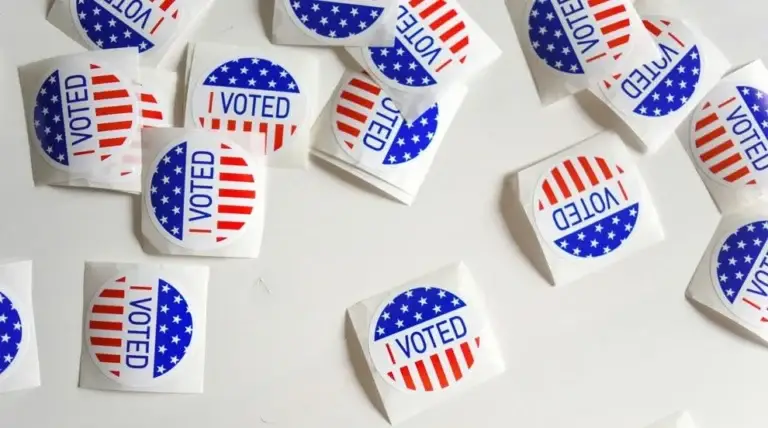(The Center Square) – States looking to pad partisan advantage by redrawing political maps ahead of the 2026 midterms face mounting legal challenges and a fresh race against the clock to get the boundaries settled.
A federal court blocked Texas from using Republican-drawn maps, while the Department of Justice recently joined a legal challenge to California’s Democrat-drawn maps.
The Texas court ordered the state to use the congressional lines in place before they were redrawn earlier this year.
“The public perception of this case is that it’s about politics,” Judge Jeffrey Brown, a Trump appointee, wrote in the decision. “To be sure, politics played a role in drawing the 2025 Map. But it was much more than just politics. Substantial evidence shows that Texas racially gerrymandered the 2025 Map.”
Texas Gov. Greg Abbott filed an appeal that could take the case to the U.S. Supreme Court.
Republicans and Democrats have long employed gerrymandering, defined as the redrawing of electoral boundaries to benefit a particular political party. The process was named after former Massachusetts Gov. Elbridge Thomas Gerry, who later served as vice president under James Madison.
Missouri, North Carolina, Ohio and Utah have redrawn maps this year. A judge recently rule against Utah’s new map.
Gerrymandering is legal unless it is based on race. Timing remains critical.
“From here on out, the time pressure is going to be intense,” Cato Institute Senior Fellow Walter Olson said. “Republicans will seek super-speedy intervention by the Supreme Court, but there isn’t time for much back-and-forth as preparations have already begun for Texas’s 2026 election cycle. And while federal courts generally frown on last-minute challenges to election laws, Judge Brown rightfully points out that the fault here lies not with the fact of judicial review but squarely with those who tried to change the Texas lines so late in the game.”
Olson said the Supreme Court doesn’t like the practice.
“The ideological trend at the Supreme Court that has made it increasingly skeptical of race-conscious line drawing, as seen in the pending case of Louisiana v. Callais, actually works for the Democratic side in this case,” he noted. Both parties have been known to engage in race-conscious line drawing when it suits their interests – and both parties should be held to constitutional account when they do it.”
Olson previously told The Center Square that gerrymandering risks frustrating voters.
Earlier this month, the U.S. Department of Justice sued California officials over the state’s redistricting plan, which could help Democrats pick up additional seats in Congress. The outcome of the legal battle could determine which party controls the U.S. House in 2026, highlighting the political significance of a nationwide scramble for redistricting ahead of the midterm elections. The Justice Department alleged California’s plan requires racially gerrymandered congressional districts in violation of the Equal Protection Clause of the 14th Amendment.
California voters approved Proposition 50 by a wide margin earlier this month. The proposition amends the state’s constitution to allow the legislature to draw a new congressional district map. The goal of redrawing the boundaries is to give Democrats an advantage that could result in the party gaining five more seats in the House. Gov. Gavin Newsom said the plan was a response to redistricting in Texas, which is designed to give Republicans five more House seats.
The state-level race started after President Donald Trump called for Texas to redraw its congressional map in July. Texas Republicans said the process was designed to increase their party’s power in Washington. Blue states, including California, have pushed back with their own redistricting. Politicians used to save battles over political boundaries for a once-a-decade update from the U.S. Census Bureau. After the Civil War, politicians would often redistrict when they thought it could give them an advantage. But over time, that practice ended and gave way to the once-a-decade update. However, that’s not the case this year.
The Republican-controlled Texas legislature passed the party’s new congressional maps in August, sparking a nationwide scramble over redistricting. In states across the country, Democratic and Republican governors are working to increase their party’s votes at the federal level.
While some states, like Ohio, had to redraw political boundaries due to a 2018 constitutional amendment, most states, including Texas, California, Florida, Missouri, Illinois, Indiana, New York, New Jersey, and Maryland, are doing so voluntarily.
A poll commissioned by Common Cause and conducted by Noble Predictive Insights found that voters don’t like it. The poll found 51% of Republicans, 70% of Democrats, and 60% of independents oppose allowing political parties to engage in mid-decade redistricting. Those numbers moved even higher when the redistricting was done by one party, as The Center Square previously reported.

